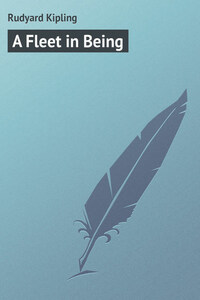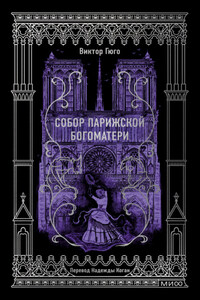At nine o'clock of a gusty winter night I stood on the lower stages of one of the G. P. O. outward mail towers. My purpose was a run to Quebec in "Postal Packet 162 or such other as may be appointed"; and the Postmaster-General himself countersigned the order. This talisman opened all doors, even those in the despatching-caisson at the foot of the tower, where they were delivering the sorted Continental mail. The bags lay packed close as herrings in the long gray under-bodies which our G. P. O. still calls "coaches." Five such coaches were filled as I watched, and were shot up the guides to be locked on to their waiting packets three hundred feet nearer the stars.
From the despatching-caisson I was conducted by a courteous and wonderfully learned official – Mr. L. L. Geary, Second Despatcher of the Western Route – to the Captains' Room (this wakes an echo of old romance), where the mail captains come on for their turn of duty. He introduces me to the Captain of "162" – Captain Purnall, and his relief, Captain Hodgson. The one is small and dark; the other large and red; but each has the brooding sheathed glance characteristic of eagles and aëronauts. You can see it in the pictures of our racing professionals, from L. V. Rautsch to little Ada Warrleigh – that fathomless abstraction of eyes habitually turned through naked space.
On the notice-board in the Captains' Room, the pulsing arrows of some twenty indicators register, degree by geographical degree, the progress of as many homeward-bound packets. The word "Cape" rises across the face of a dial; a gong strikes: the South African mid-weekly mail is in at the Highgate Receiving Towers. That is all. It reminds one comically of the traitorous little bell which in pigeon-fanciers' lofts notifies the return of a homer.
"Time for us to be on the move," says Captain Purnall, and we are shot up by the passenger-lift to the top of the despatch-towers. "Our coach will lock on when it is filled and the clerks are aboard."…
"No. 162" waits for us in Slip E of the topmost stage. The great curve of her back shines frostily under the lights, and some minute alteration of trim makes her rock a little in her holding-down slips.
Captain Purnall frowns and dives inside. Hissing softly, "162" comes to rest as level as a rule. From her North Atlantic Winter nose-cap (worn bright as diamond with boring through uncounted leagues of hail, snow, and ice) to the inset of her three built-out propeller-shafts is some two hundred and forty feet. Her extreme diameter, carried well forward, is thirty-seven. Contrast this with the nine hundred by ninety-five of any crack liner and you will realize the power that must drive a hull through all weathers at more than the emergency-speed of the "Cyclonic"!
The eye detects no joint in her skin plating save the sweeping hair-crack of the bow-rudder – Magniac's rudder that assured us the dominion of the unstable air and left its inventor penniless and half-blind. It is calculated to Castelli's "gull-wing" curve. Raise a few feet of that all but invisible plate three-eighths of an inch and she will yaw five miles to port or starboard ere she is under control again. Give her full helm and she returns on her track like a whip-lash. Cant the whole forward – a touch on the wheel will suffice – and she sweeps at your good direction up or down. Open the complete circle and she presents to the air a mushroom-head that will bring her up all standing within a half mile.
"Yes," says Captain Hodgson, answering my thought, "Castelli thought he'd discovered the secret of controlling aëroplanes when he'd only found out how to steer dirigible balloons. Magniac invented his rudder to help war-boats ram each other; and war went out of fashion and Magniac he went out of his mind because he said he couldn't serve his country any more. I wonder if any of us ever know what we're really doing."
"If you want to see the coach locked you'd better go aboard. It's due now," says Mr. Geary. I enter through the door amidships. There is nothing here for display. The inner skin of the gas-tanks comes down to within a foot or two of my head and turns over just short of the turn of the bilges. Liners and yachts disguise their tanks with decoration, but the G. P. O. serves them raw under a lick of gray official paint. The inner skin shuts off fifty feet of the bow and as much of the stern, but the bow-bulkhead is recessed for the lift-shunting apparatus as the stern is pierced for the shaft-tunnels. The engine-room lies almost amidships. Forward of it, extending to the turn of the bow tanks, is an aperture – a bottomless hatch at present – into which our coach will be locked. One looks down over the coamings three hundred feet to the despatching-caisson whence voices boom upward. The light below is obscured to a sound of thunder, as our coach rises on its guides. It enlarges rapidly from a postage-stamp to a playing-card; to a punt and last a pontoon. The two clerks, its crew, do not even look up as it comes into place. The Quebec letters fly under their fingers and leap into the docketed racks, while both captains and Mr. Geary satisfy themselves that the coach is locked home. A clerk passes the waybill over the hatch-coaming. Captain Purnall thumb-marks and passes it to Mr. Geary. Receipt has been given and taken. "Pleasant run," says Mr. Geary, and disappears through the door which a foot-high pneumatic compressor locks after him.














